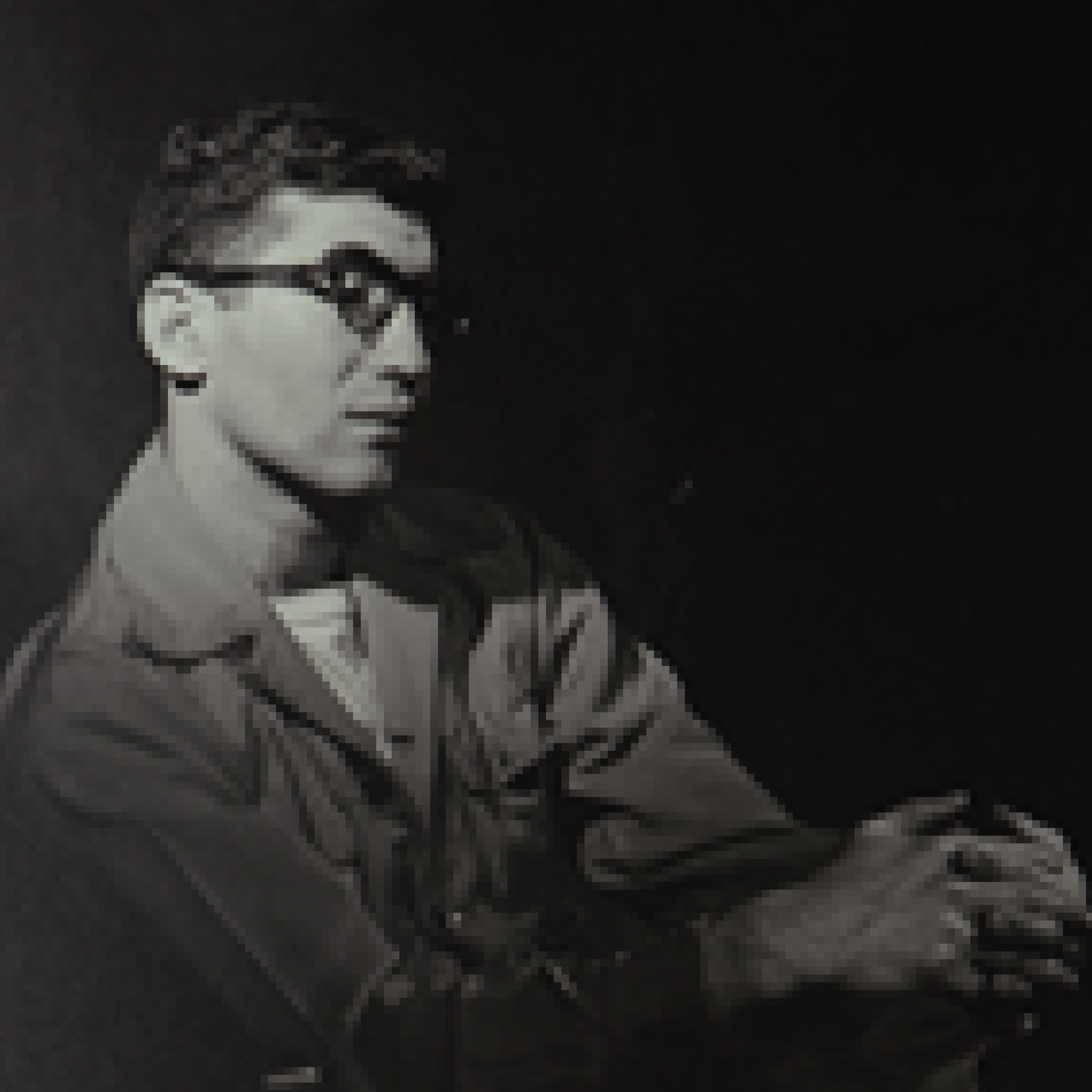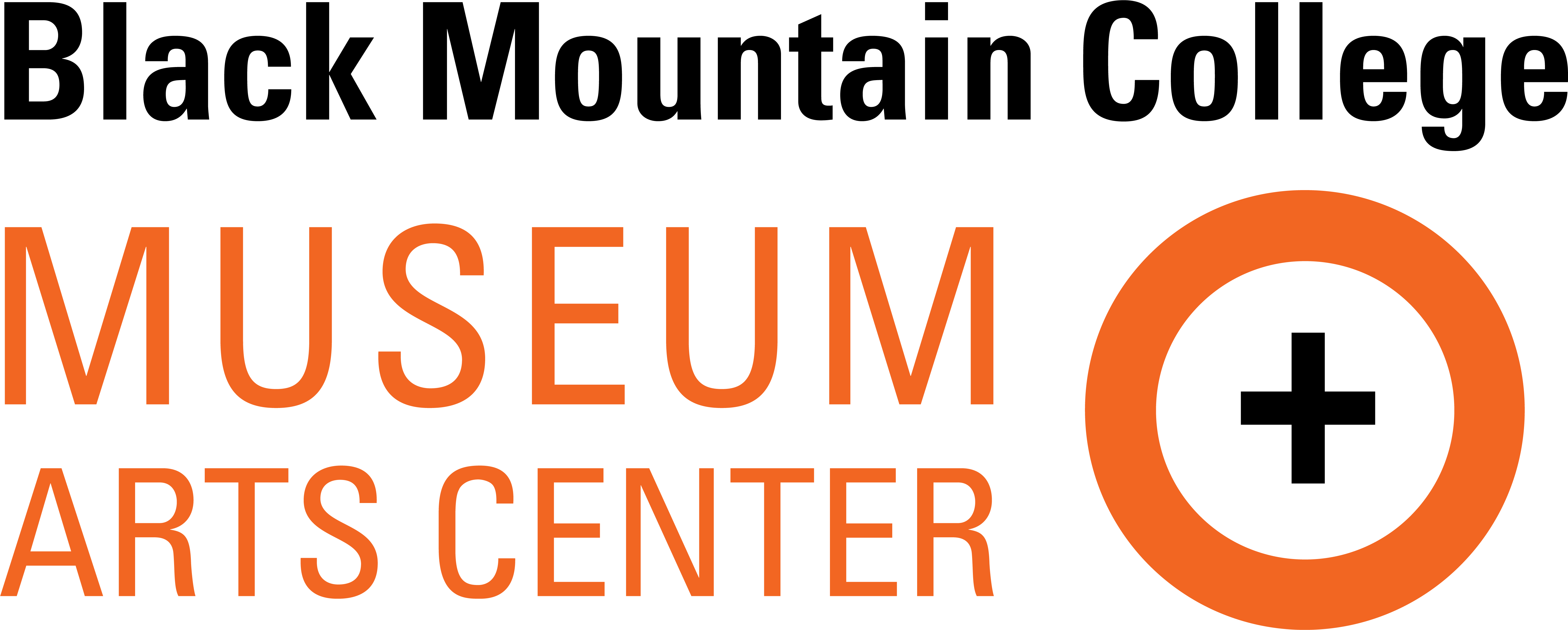Leo "Slim" Krikorian

Crop of portrait of Leo Krikorian. Courtesy of Asheville Art Museum, Black Mountain College Collection.
Composition géométrique by Leo Krikorian.
FOCUS
Art/ Design/ Craft
ROLE
Student
ATTENDANCE
1947 - 1948
BIRTH
1922-12-28
Fowler, CA
DEATH
Paris, France
Leo Krikorian first heard about Black Mountain College from a girl with whom he was having a cup of coffee in Los Angeles: “She talked about Black Mountain College for maybe five, ten minutes, and I really got interested.” At the time he was studying photography at the Art Center in Los Angeles. He wrote for an application and returned it with some of his photographs. He recalled that he did not feel he had the requirements to enter conventional colleges.
He drove his Model A Ford at a speed of about thirty-four miles an hour from Los Angeles to Black Mountain. The cross-country trip took two weeks. He arrived a week before classes started and was put to work on the farm. Leo had worked on farms and in canneries as a child during the Depression. His parents had come to this country in 1914 from Armenia and settled in an Armenian community in Fowler, south of Fresno, California.
Wartime
In 1943 he was drafted and spent two years in the army where he was sent to photography school. He was stationed in Florida where he printed photographs and worked on training manuals. After the war he enrolled at the Art Center School in Los Angeles to study photography on the G.I. Bill. Among his teachers was Ansel Adams.
At Black Mountain
At Black Mountain Leo took art classes as well as John Wallen’s Group Process class. Although he audited Josef Albers’s design class, it was Ilya Bolotowsky who had the greatest influence as a teacher. He recalled that he didn’t care for Albers’s teaching methods – “He doesn’t teach. He starts you off.” In contrast, Bolotowsky allowed his students to paint in any way that they wanted. “You could be a realist or be an abstractionist, and you’d get criticized according to your painting, not what you think.”
Leo also continued his work independently in Black Mountain’s small darkroom. At the end of a year at Black Mountain, Leo thought his GI Bill benefits had run out. He traveled first, briefly, to New York where he worked in darkrooms and continued to make abstract photographs. He then moved to San Francisco where he used his remaining G.I. Bill benefits to study at the Francisco School of Fine Arts (San Francisco Art Institute).
Again he studied with Anseln Adams as well as Minor White and Clifford Stills. In need of money he signed on a ship as a merchant seaman for two years. On his return to San Francisco, he recalled that after two years at sea, he wanted to meet other people – especially artists.
The Place
In 1953, he and Knute Stiles, another Black Mountain student, opened a bar, The Place, at 1546 Grant Avenue in North Beach. During the ‘50s The Place was the center of Beat life in San Francisco, and Leo became know as the “Grandfather of the Beats”. It was there that artists and writers gathered to drink and talk as they did at the Cedar Bar in New York. Abstract artists were given exhibitions, experimental films were screened, music recitals – both scheduled and impromptu – were held, and poets read their work. Allen Ginsburg gave a test reading of his poem “Howl” at The Place before it was published. Leo recalled that the setting was quite simple: a piano, sawdust on the floor, tables and chairs.
Two events drew crowds: Monday night was Blabbermouth Night when there was a contest for the most outrageous speech (the reward a bottle of champagne), and April Fools Day was the occasion for the annual Dada Show. Leo recalled that after Kerouac’s On the Road was published, people hitchhiking to San Francisco would make The Place the first stop where they left their suitcase until they found lodging. Leo never had a lease and when the landlord – “an Italian ex-Mafia from Chicago” – sold the building in 1960, the bar closed. In 1956 in Sausalito, Leo opened a deli, The Kettle, a gathering place for area artists and writers, many living on houseboats. He also had a coffee shop for three years. While operating the bar and restaurant, Krikorian continued to paint and make abstract photographs.
Film & France
In 1970 he studied filmmaking at The Film School, Half Moon Bay, California in 1970. His paintings were exhibited at The Place, at the Six Gallery, a cooperative gallery devoted to experimental art, and at the Metart Gallery in San Francisco. At a time when most young artists were influenced by Abstract Expressionism, Leo’s carefully crafted geometric paintings showed the influence of both Bolotowsky and Mondrian. In 1977, when he sold The Kettle, Leo moved to France, living part of the year there and part in Sausalito. He bought a space in a 15th century building at 36, Rue des Blancs Manteaux near the Georges Pompidou Modern Art Museum.
There he had a studio as well as a gallery where he exhibited his paintings and stained glass. Leo’s later abstract, geometric paintings using dynamic symmetry, reversed symmetry, positive and negative space and other abstract principles are closer to the work of Josef Albers’s than of Ilya Bolotowsky. Optical illusion and color are central themes. In Paris he created stained glass windows incorporating the patterns and themes of his paintings. The leading between the flat planes added a new element, that of drawing, to the images.
Exhibitions
Leo’s work has been exhibited in major cities including New York, San Francisco, Los Angeles, Amsterdam, Paris, Seattle, Rome and London. In 1993 the Art Research Center (ARC), New Circle Publications, and the International Institute for Modern Structural Art honored Krikorian with a retrospective exhibition Concrete Concepts, the Career of Krikorian at the Scarritt Arcade and the Power & Light Building in Kansas City. His work has been exhibited in United States, France, Netherlands and Germany. Krikorian presently lives in Sausalito where he continues to paint. Recommended reading: Esther Heyboyan-DeVries, “Leo Krikorian: A Man for All Seasons,” Ararat, Winter 1990:2-7. Jack Lind, The Beatniks and “The Place”: The Golden Age of North Beach in San Francisco. © 1987 Leo Krikorian. Privately published. The Beach (videotape). Produced/ Directed by Mary Kerr. CA PALM. © 1995,"
Biography written by Mary Emma Harris for Black Mountain College Project.
Black Mountain College Project
Mary Emma Harris interviewed Leo in 2002 and the transcript is available from Appalachian State University under The Mary Emma Harris and Black Mountain College Project, Inc. Oral History collection.
Topics: Hearing about BMC in Los Angeles – driving to BMC from California – Ilya Bolotowsky as teacher – Armenian family background – work program – Kenneth Noland and automobile incident – The Place, beat bar inSan Francisco – Knute Stiles - Blabbermouth Night – restaurant The Kettle – San Francisco writers and artists in 1950s – Peggy Tolk-Watkins Tin Angel – influence of BMC – army life



